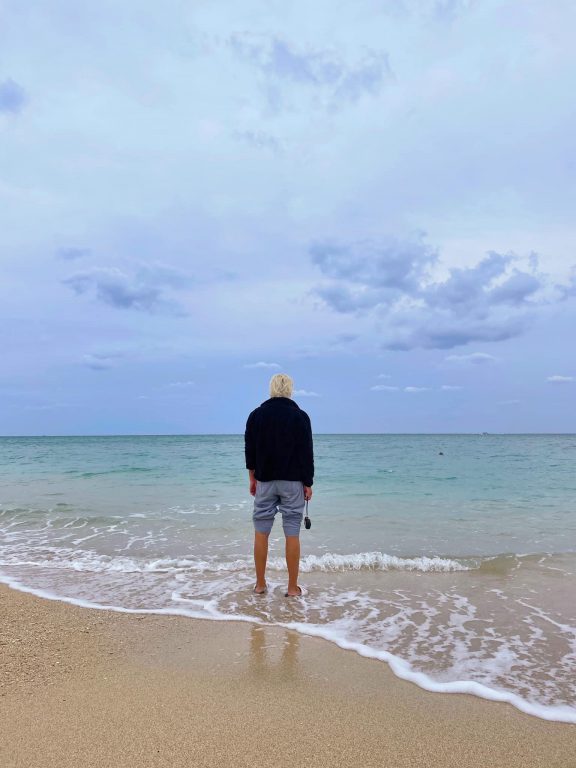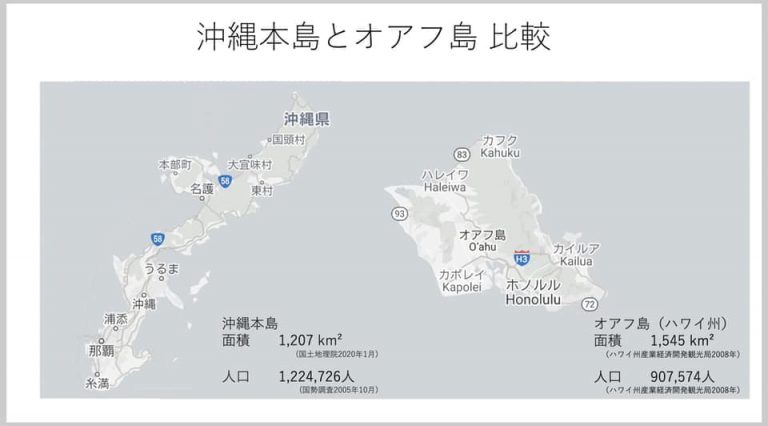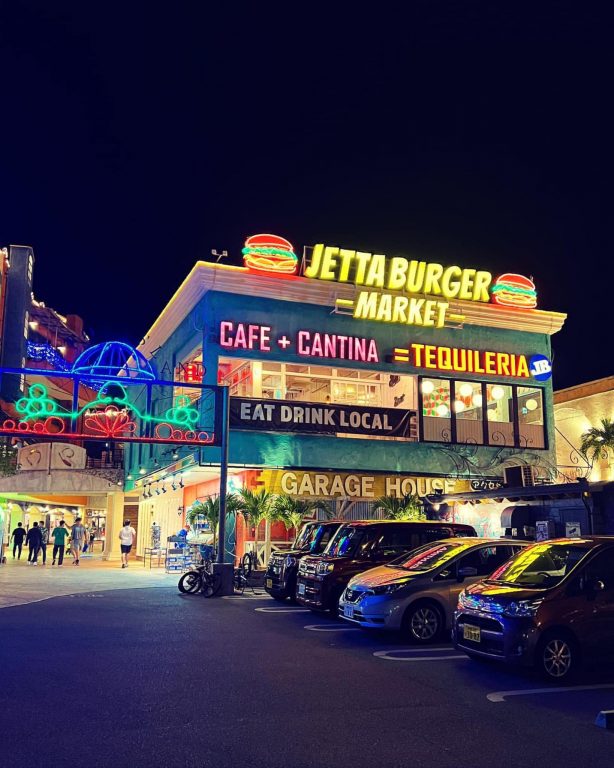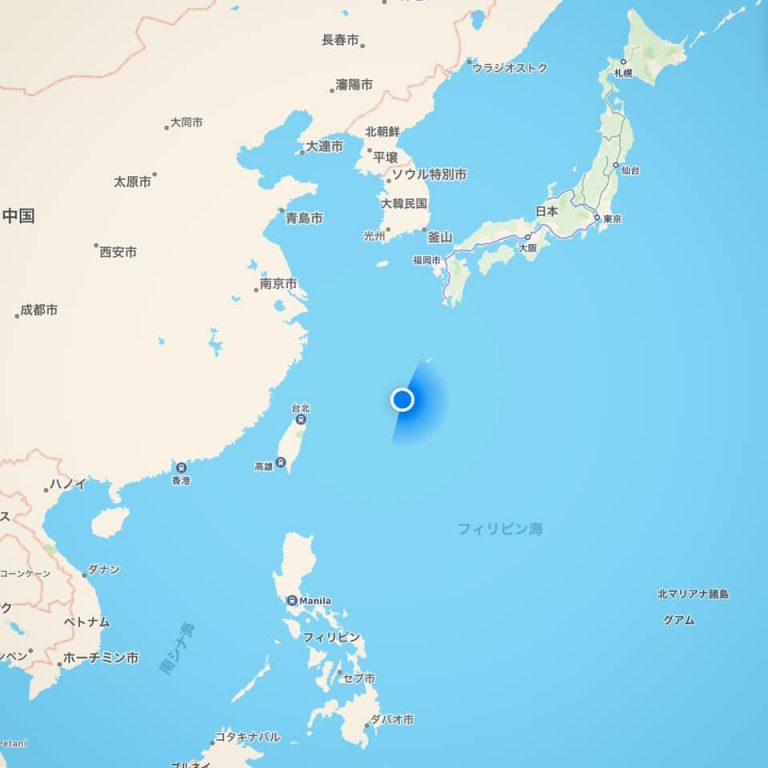Today is the 50th anniversary of Okinawa’s reversion to mainland Japan : Thinking about Okinawa branding in the future.

Today is the 50th anniversary of the reversion of Okinawa to mainland Japan.
Considering the rebranding of Okinawa is the same as rebranding Japan as a whole.
Compare the islands of Okinawa and Oahu. Although they are almost the same in size and population, the economic disparity is seven times greater. The difference is, of course, the difference in industry, but what is largely lacking is a lack of strategy.
Just as Kakuei Tanaka remodeled the Japanese archipelago based on his experience with the construction industry, we need to think of Okinawa in geopolitical terms.
Hawaii had a strategy. First, Honolulu was thoroughly developed for tourism. It put large amounts of white sand on its black granite beaches, attracted global hotels, and lined up luxury brands.
To transform Okinawa in one fell swoop, we need a blue print (a complete picture) from the after-corona era. All resorts are cities and beaches all rolled into one. The center of Okinawa is Naha, but there are no beaches in the neighborhood. There are no first-class hotels on Kokusai-dori, the main street. This is the biggest bottleneck.
There are luxury hotels such as the Ritz and Halekulani in Onna Village in northern Okinawa, but they are 1.5 hours away from the airport, and once inside the hotel, visitors can only enjoy the grounds and the nearby ocean. Tourists are so enclosed within the grounds that they are unable to experience the true nature of Okinawa.
To solve these problems, a new “center” is needed.
(1) Close to airport
(2) Close to the beach
(iii) There is land that could attract a hotel.
The only way to fulfill this requirement is to develop the southern part of the city, such as Nanjo City, where I am developing a resort, or the neighboring city of Itoman.
The northern areas, such as Yanbaru, are far from the airport and are designated as UNESCO nature reserves, making development difficult. Therefore, the southern part of the country is the only choice in terms of land and topography. Land is also inexpensive.
This is where we will create an Okinawan version of Honolulu.
Tourism is the fastest growing sector of the Okinawan economy; tourism doubled in the decade from 2009 to 2019 (pre-Corona). The stay-home by Corona ushered in the online society. It has ruined tourism, but on the other hand, it has created an environment where people can work from Okinawa (long-stay workcation).
Why not create a hybrid resort that caters to both short-term vacations and extended-stay workcations?
And the entertainment industry is also active. Yoshimoto Kogyo is focusing on art festivals and film festivals, and DMM has opened an aquarium that incorporates high technology. The city has also produced a number of great musicians, including Namie Amuro, Speed, BEGIN, and Awich.
Okinawa has the potential to become an entertainment city like Vegas or Macau. For this purpose, it is necessary to open up the airport thoroughly. The first step is to attract airlines that can take tourists not only from Tokyo but also from Hong Kong, Taiwan, Seoul, and Manila. The super weak yen will also be a boost.
If Okinawa’s diversity (Hawaiian and Brazilian connections expanded by Uchinanchu) can be used to create a multicultural world, shows such as Cirque du Soleil can be held.
And, as is the case with resorts around the world, if a tourist city is built in the center, there will be places in the suburbs where retirees can live comfortably, such as the Riviera (a French-Italian holding) or Palm Springs (a suburb of Los Angeles). If such a virtuous cycle can be created, Okinawa will be several times more economically prosperous than it is now.
As noted above, this is not a plan to remodel Okinawa. It is a concept necessary for the rebranding of Japan as a whole.
Tourism + Entertainment feat. IT








